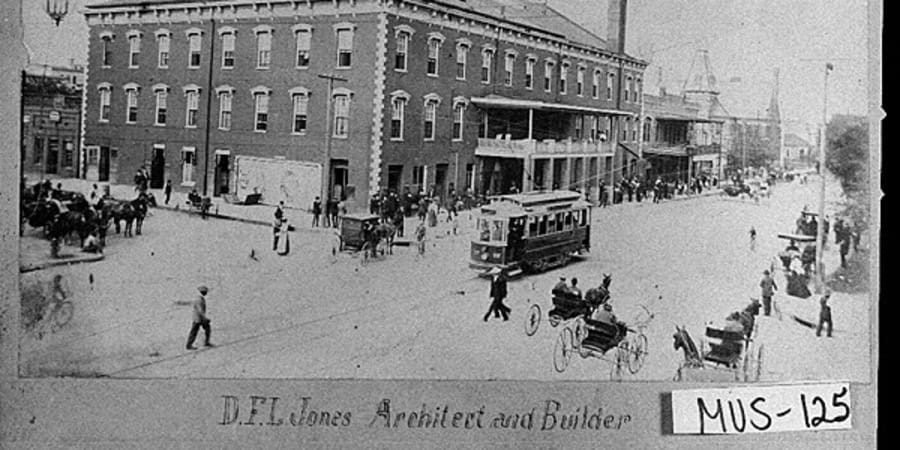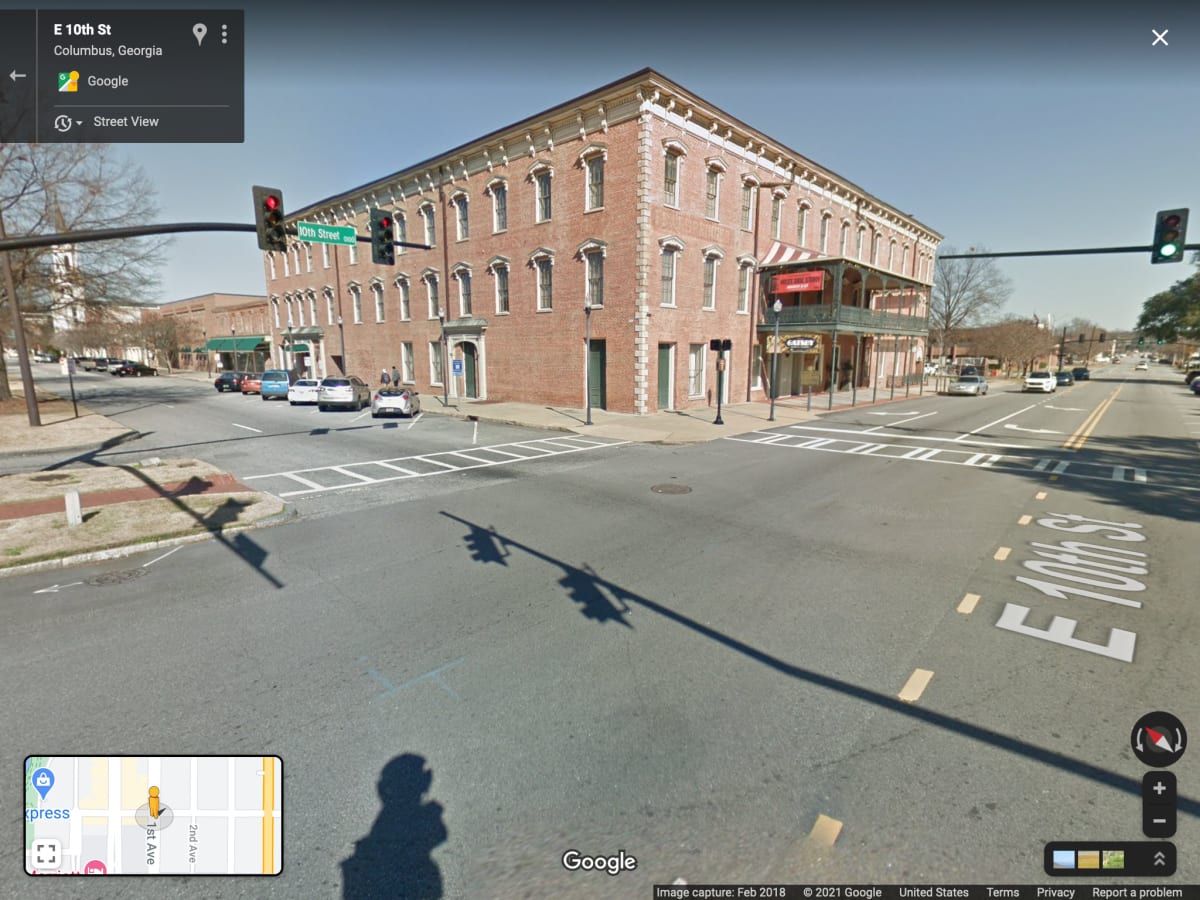
When streets were for everyone: Columbus, GA in 1900
Bike lanes, mixed-use trails, and public transportation aren’t just modern fads. For most of history, our streets hosted a diverse mixture of mobility methods. What if we could see exactly how our streets would look without cars dominating them? Thanks to historical archives, we can!
Last year, we saw the 1906 “A Trip Down Market Street” video restored in 4K. One of the stunning things about this video is how radically different this street looked during that time period. To quote Arian Horbovetz’s analysis:
Trolleys, carriages, bikes, cars and pedestrians—count the number of different forms of mobility in this video. The streets were truly for everyone, regardless of speed, size, or socioeconomic status.
This got me thinking: what if we could promote similar visuals from the rest of our cities? So I began searching the Digital Library of Georgia for images in my current town of residence, Columbus, GA. The results were limited, but I found this particularly notable photo:
Image credit: Georgia Archives & Digital Library of Georgia.
According to the DLG’s metadata, this was taken between 1895 and 1900. It depicts the Springer Opera House in downtown Columbus, a place which is still standing and operational today.
Although the photographer may have focused on the Springer, I’m more interested in the streets around it. We can see people on foot, horses, trolleys and even a bicycle just like in the Market Street video. We can tell that they’re all moving at about equal speeds. It’s far safer, slower, and more diverse than our car-dominated version of the same street.
The modern version of that corner is sterile in comparison. The diverse mobility styles have all been replaced by cars. It is too dangerous, not to mention illegal, for people to walk in this street now.
The point here is not to idolize the past, but to recognize how our current “complete streets” ideals are not just modern novelties. Before we re-engineered society to prioritize cars, our streets were already “complete” in the sense that they accommodated any mode of transportation. Diverse mobility isn’t just modern, nor is it just traditional. It’s timeless.
By making these historical streets more visible to the public, we can also challenge the misconception that car-dominance is naturally the norm. Does your town have archived images of what its streets once looked like? Maybe it’s time to find those and raise awareness of what kind of streets were once, and still are, possible.


